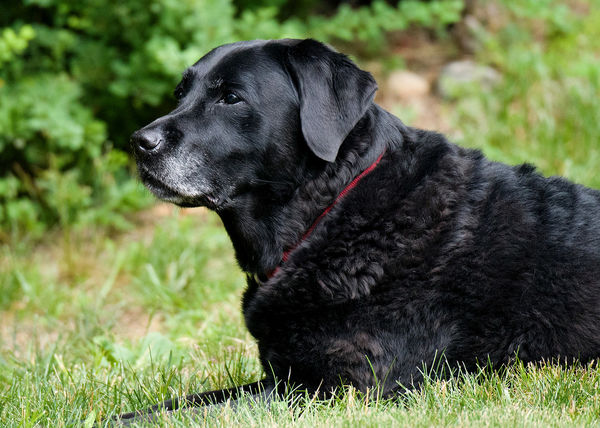Todays question is shooting black cats
Dec 28, 2016 11:27:17 #
HillbillyHiker wrote:
I do shelter photos weekly and the black cat is ab... (show quote)
With proper camera menu settings, an incident reading or reading from a gray card, and a custom white balance, you CAN get a perfect JPEG exposure of a black cat! Meter THE LIGHT falling ON the subject, not the subject itself.
Dec 28, 2016 11:35:15 #
Marionsho wrote:
You will need to add exposure so the cats will look black as apposed to gray.
Have fun.
Have fun.
I'd guess negative exposure is needed. The camera works to make the image gray...i.e. increases exposure on dark images.
This non-intuitive adjustment also works in bright snow: there you need to increase exposure between one and two stops if matrix metering.
Dec 28, 2016 11:37:42 #
burkphoto wrote:
With proper camera menu settings, an incident reading or reading from a gray card, and a custom white balance, you CAN get a perfect JPEG exposure of a black cat! Meter THE LIGHT falling ON the subject, not the subject itself.
That would work also.
Some recommend placing your hand in front of your lens and metering on it. You need to be mindful how you do it to ensure your camera doesn't readjust. M mode might be best.
Dec 28, 2016 11:50:23 #
rmm0605 wrote:
Shoot two stops higher than you would otherwise.
Methinks that is the opposite of what you need to do.
Dec 28, 2016 12:35:32 #
MtnMan wrote:
Methinks that is the opposite of what you need to do.
That poster is probably thinking that a higher f/number is a smaller aperture. I hope so, anyway!
Dec 28, 2016 12:42:08 #
Gene51 wrote:
I do lots of shelter animal photography. This is w... (show quote)
I use reflective readings interpreted using the zone system exclusively when using ambient light. When using flash, as I did for for the first shot, I take incident reading with a flash meter. With a black cat I usually add a small amount of extra exposure (I think 2/3 stops) to make the cat less "black" and then darken it in post processing.
Cats have a lot of attitude - "Cattitude" - which makes it a lot of fun to capture.
Here are some great candids of black cats:
https://iso.500px.com/beautiful-black-cats-photos/
http://www.boredpanda.com/i-photograph-black-cats-to-promote-adoption/
two umbrellas
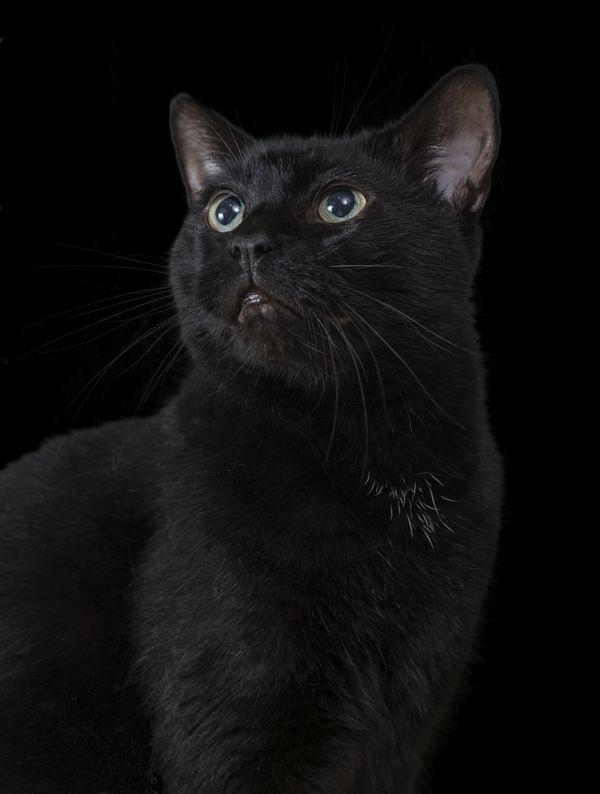
(Download)
window ambient
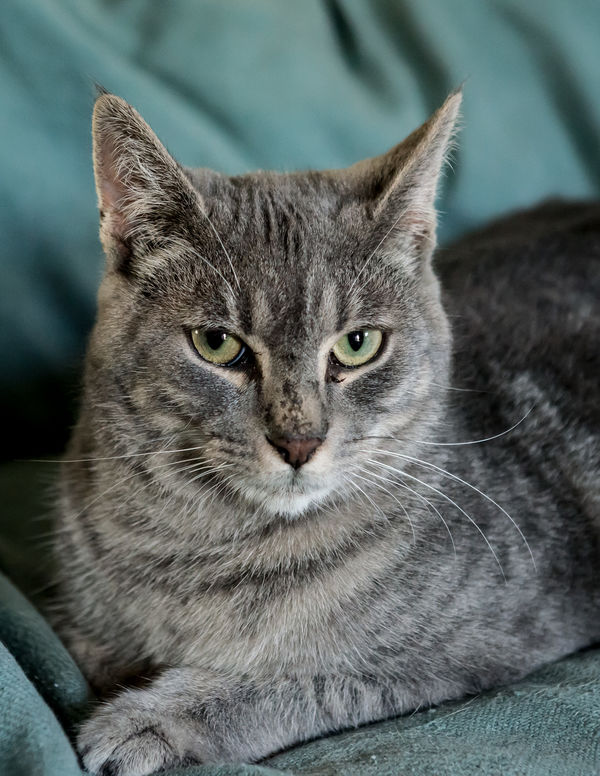
(Download)
window ambient
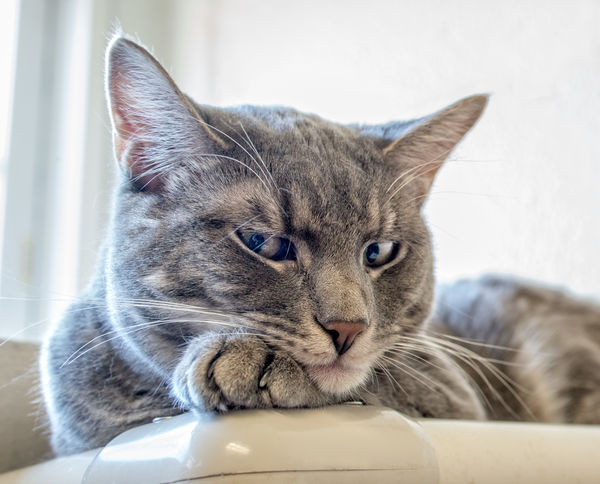
(Download)
camera mtd flash, pointed behind and slightly above
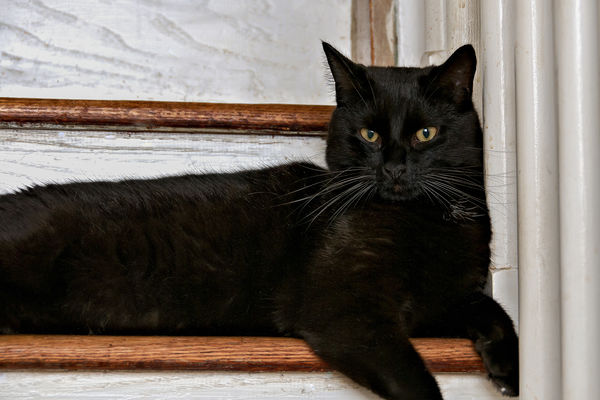
(Download)
outdoors, overcast, no fill
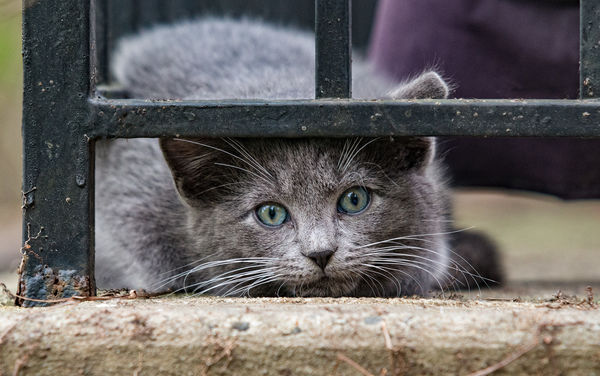
(Download)
indoors, camera mtd flash, pointed to the right
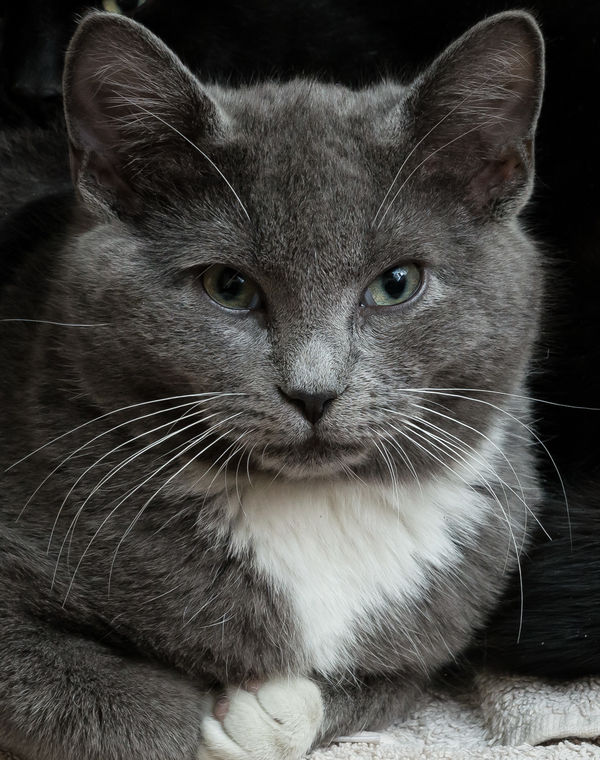
(Download)
Dec 28, 2016 12:44:43 #
burkphoto wrote:
Reflective readings off black cats are unreliable. A gray card is a reliable reference.
I've used two large umbrellas and two large white reflectors with good luck. Some cats tolerate flash quite well. Others recoil from it and go berserk. I prefer CFL.
I've used two large umbrellas and two large white reflectors with good luck. Some cats tolerate flash quite well. Others recoil from it and go berserk. I prefer CFL.
I do reflective readings all the time with 99% success on exposures. Zone system background is necessary. I usually place a black cat at zone 4, unless I am doing a pair of cats only one of which is black, or if the cat is a tuxedo. For tuxedos I read the white fur and add 1 1/3 stops to get the white nice and clean.
I usually don't have the time or inclination to fuss with a hand-held meter unless I am working with flash. Because of the circumstances, I end up using ambient 65% of the time. Cats move too fast, especially kittens. When shooting in available light, by the time I grab the meter, take a reading, set the camera - the cat is gone. Reflective readings are the ONLY reliable method, as long as the shooter knows what they are doing. Shooting sports is easy compared to shooting cats. Incident readings are generally very dependable, but in these situations, totally impractical. In my experience, I am just as accurate with the zone system and spot readings as I am with an incident meter - so the meter usually stays home.
Dec 28, 2016 12:45:24 #
burkphoto wrote:
Use flash or PHOTO GRADE CFL or LED lights in large soft boxes. The light needs to wrap around the hair shafts so they shine. Meter a calibration target or use an incident flash meter that is precisely calibrated to your camera. DO NOT METER THE CAT. Use a custom white balance off a gray card or a One Shot Digital Calibration Target.
 incident flash meter. Off-camera flash. You need to get a black, but you also want texture.
incident flash meter. Off-camera flash. You need to get a black, but you also want texture.Dec 28, 2016 13:29:28 #
Several folks have mentioned getting the cats to "pose". It ain't gonna happen. If the cat is active it needs to be shot like a sporting event. Anticipation is key.
Please ignore the background. The shelter where I shoot want allow me to remove them from their "condos".
Please ignore the background. The shelter where I shoot want allow me to remove them from their "condos".
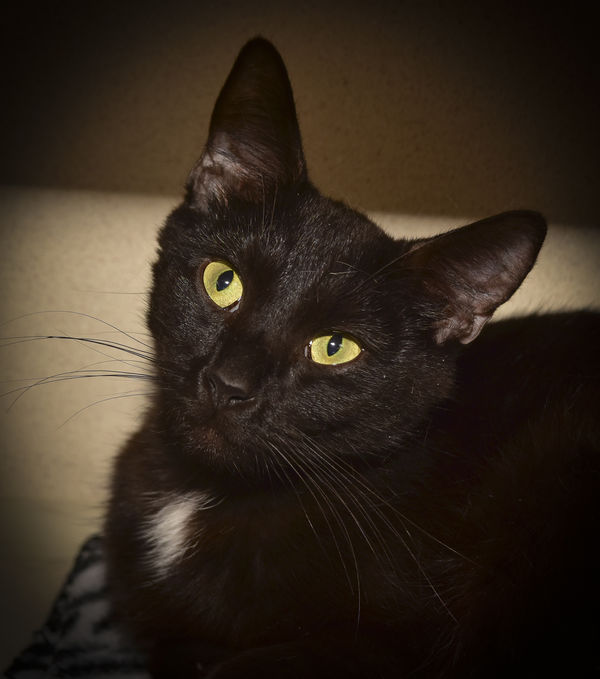
Dec 28, 2016 13:54:53 #
Rick from NY
Loc: Sarasota FL
Reinaldokool wrote: ......... You need to get a black, but you also want texture.
......... You need to get a black, but you also want texture.
 ......... You need to get a black, but you also want texture.
......... You need to get a black, but you also want texture.Absolutely. If you underexpose too much trying to make the subject black, you risk getting a black blob. When shooting an animal, it is important to hit the sweet spot between true black and texture in the coat.
Dec 28, 2016 14:02:21 #
I am not an expert on black cats as such, but my philosophy of light is that fine detail is best captured by spectral light--the smaller the light source, the more fine detail is revealed. This is why we use soft box light or bounced light--the light source is so large that it fails to show contrast in the fine details of the person's face--filling all the tiny shadows of nooks and crannies (and cracks). It follows that shine on the black coat of fur will be found in the tiny reflections of spectral light on the hairs, perhaps after brushing. One small point of light, with the light as far back from the subject as practical, at an angle, will show maximum texture and detail, contrasting the sheen from the dark matter beneath it which reflects nothing.
Since real black (or white) has no detail, the only way to show texture is by underexposing or overexposing. Given that we are metering just the fur, you cannot underexpose black, but you can overexpose it just enough that it is very dark gray that shows just a bit of texture. It is pointless metering black cats or anything really black. In the days of zones, we could get a correct setting for a gray card (or gray cat), then increase exposure 3 stops (or try 4). This would make the gray card photograph as nearly white, but a black cat, at the same setting, dark grayish, or nearly real black. In full near-frontal sunlight above and to one side (window, door, or wall) this might be ISO 200, shutter 100, lens f8. If a longer than 100mm lens is used, try ISO 400 and shutter speed 200. Whatever the light, you can test shoot the palm of your hand and use the setting that makes it much too light, but not washed out--maybe 3 or 4 stops over the correct exposure of the hand--and try that setting manually on the cat.
You do not have to check each black cat personally. If the lighting is known or predetermined, you can use one cat, cushion, cape or coat for practice, then use it for any black cat. Every cat will be shot in that light with those settings. For this, manual settings will require less mental strain than from trying to outsmart the camera's opinions about speed, aperture, ISO.
Since real black (or white) has no detail, the only way to show texture is by underexposing or overexposing. Given that we are metering just the fur, you cannot underexpose black, but you can overexpose it just enough that it is very dark gray that shows just a bit of texture. It is pointless metering black cats or anything really black. In the days of zones, we could get a correct setting for a gray card (or gray cat), then increase exposure 3 stops (or try 4). This would make the gray card photograph as nearly white, but a black cat, at the same setting, dark grayish, or nearly real black. In full near-frontal sunlight above and to one side (window, door, or wall) this might be ISO 200, shutter 100, lens f8. If a longer than 100mm lens is used, try ISO 400 and shutter speed 200. Whatever the light, you can test shoot the palm of your hand and use the setting that makes it much too light, but not washed out--maybe 3 or 4 stops over the correct exposure of the hand--and try that setting manually on the cat.
You do not have to check each black cat personally. If the lighting is known or predetermined, you can use one cat, cushion, cape or coat for practice, then use it for any black cat. Every cat will be shot in that light with those settings. For this, manual settings will require less mental strain than from trying to outsmart the camera's opinions about speed, aperture, ISO.
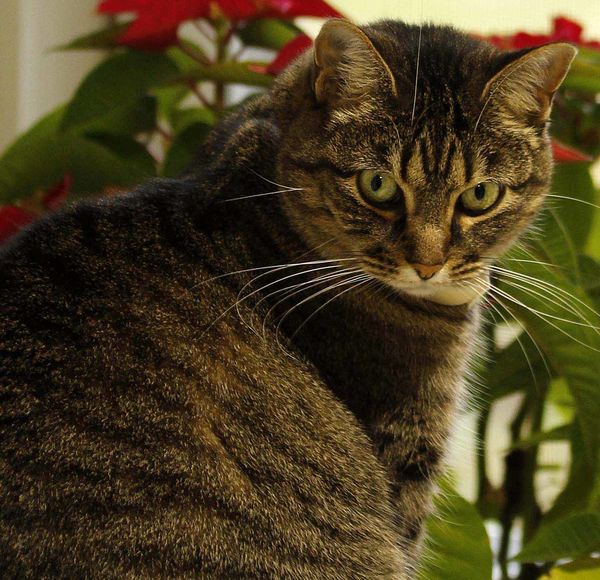
Dec 28, 2016 14:03:49 #
Rick from NY
Loc: Sarasota FL
I am reading the various comments about the pros and cons of incident and reflective metering. I would have agreed that incident metering in the days of film was almost a necessity unless you were Adam's like in your zone theory. But with today's instant review on the lcd screen, it makes much less difference. I would agree that an incident meter will most often yield the better exposure, but I seldom have the motivation to pull out my handheld meters when it is so easy to do a reading from the camera meter, adjust on the fly based on my experience and then just chimp the image and adjust as necessary. I actually don't think I have dragged out my Gossen in the past 15 years, even with studio flash portraits. It is just so damned easy to use today's amazing technology and wing it. If I meter a black dog and don't like how it appears in the screen (and the histo), it takes less time for me to adjust via aperture, SS or ISO than it would take to walk over to the cat, take the reading and set my camera manually.
It used to take skill to make well exposed photos. Now, many times, an amateur with an entry level DSLR set to program mode can often make a great image by pointing and shooting. Agreed that the case of a black critter requires some understanding of 18% gray, but all a newbie has to do is set the camera on program, shoot a 5 shot bracket set for 1/2 stop intervals and pick the best shot.
It used to take skill to make well exposed photos. Now, many times, an amateur with an entry level DSLR set to program mode can often make a great image by pointing and shooting. Agreed that the case of a black critter requires some understanding of 18% gray, but all a newbie has to do is set the camera on program, shoot a 5 shot bracket set for 1/2 stop intervals and pick the best shot.
Dec 28, 2016 14:19:38 #
Rick from NY
Loc: Sarasota FL
Here is shot of my 12 year old lab (who still behaves as though she were a puppy) taken on the fly. Camera set as usual to evaluative metering, dialed in -1 2/3 comp (based on my experience shooting her in every conceivable light) and grabbed the shot. Roxie is rendered black, but the texture of her coat is present and you can even see the slightly reddish highlights in her coat.
Dec 28, 2016 14:19:41 #
Dec 28, 2016 17:10:59 #
amfoto1
Loc: San Jose, Calif. USA
bdk wrote:
I was asked to come to a shelter and just shoot th... (show quote)
First, I didn't read all four pages of responses....
But, some of the early responses I saw are completely wrong... advising you to do just the opposite of what you should.
If you are using an auto exposure mode or manual relying upon the camera's meter for guidance, with a black object (be it a cat or anything else) you must STOP DOWN.... REDUCING EXPOSURE. This is because the reflective metering system will want to over-exposure a darker than average subject. If you are using auto exposure, you'll want to dial in some - (minus) Exposure Compensation.... how much depends upon the metering mode you're using and how much of the image area the black cat is filling. If it's spot metering and much of the image area is filled with cat, then I'd start with -1 stop and see how that looks (per the histogram). If the cat is less of the metered area, somewhat less E.C. might be needed. More if they occupy most or all the metered area.
If using manual exposure but still relying upon the camera's metering system, you need to make a similar reduction in exposure by stopping down or increasing shutter speed.
If using flash that's controlled TTL, you'll need to dial in Flash Exposure Compensation in the same way, reducing exposure via the flash. If using manual flash, well you'll just need to experiment and dial it down if needed.
The suggestion to use a gray card to determine exposure is a good one, either with or without flash. That would get you a more accurate setting, than metering directly off a black cat!
Almost certainly the reason the shelter is having trouble getting good photos of black cats is because their point n shoot camera is significantly overexposing the images.
Also watch your white balance. Black (and white) objects tend to show color tints particularly badly. If you use fill flash, mixed with ambient light, it can be pretty tricky... one side of the cat, primarily lit by the flash, will be around 6000K while the other side that's lit more by ambient light will be whatever color the ambient ligth happens to be (5000K daylight, 4200K shade, 3000K tungsten, 2400K fluorescent, etc., etc.) This can be a real nightmare to fix in post-processing. One "trick" is to use a gel filter over the flash to make it's output closer to the ambient light, but you need to figure that out first.
With flash you also have to watch out for "eyeshine" with animals, which is much like redeye in people (but differs in color with animals who see in different spectrums than us). Keep your flash well away from the lens axis, to reduce risk of eyeshine. Flash can be used "very small" (such as using the little bounce reflector built into some flashes) just to add a small catchlight to animals' eyes. That makes them look more alive and animated, than shots without any catchlight.
Bounced light, using a neutral pure white card or silver/gold reflector might be easier to use than flash, since it will rely upon the same ambient light. Your best bet would be to work outdoors in bright shade, but of course you need to keep cats contained, too.
Finally, black isn't really black... I'm friends with a big feral black cat, that when you see her in the sun has a lot of brown and auburn in her fur.
A black horse is just as challenging to shoot... and isn't really black!
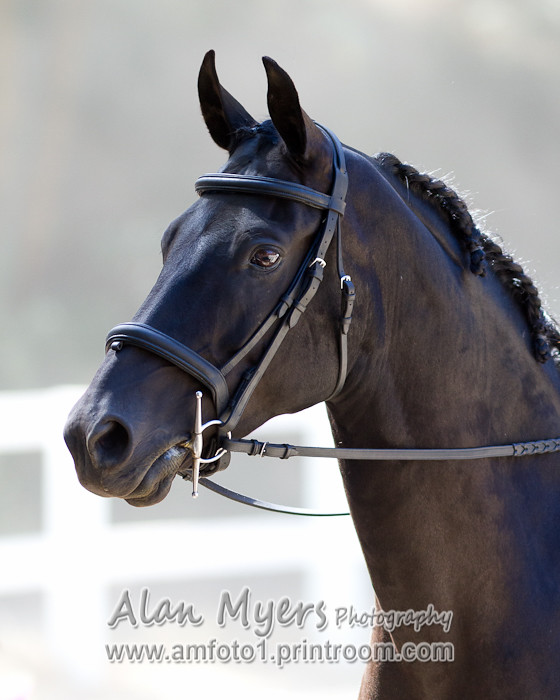
Here I was lucky, the horse was standing in bright shade near a white painted wall which served well to bounce quite a bit of fill light. Also, the sand in this particular arena is highly reflective (which is what gives the warm tint to parts of the image).
Yes, you can get cats to "pose"! For some inspiration check out Richard's work at http://www.chanan.com/Feline_Photography.html He's been one of the top cat photographers for three decades or more. You can see a lot of his work in Cat Fancy magazine and other publications. At cat shows, he sets up an 8 or 10 foot diameter tent with a posing stand, lighting gear, toys inside... then he, the cat and the cat's handler all go inside for the shoot. Keeps the critters from escaping and away from all the distractions (such as 500 other cats!).
If you want to reply, then register here. Registration is free and your account is created instantly, so you can post right away.






